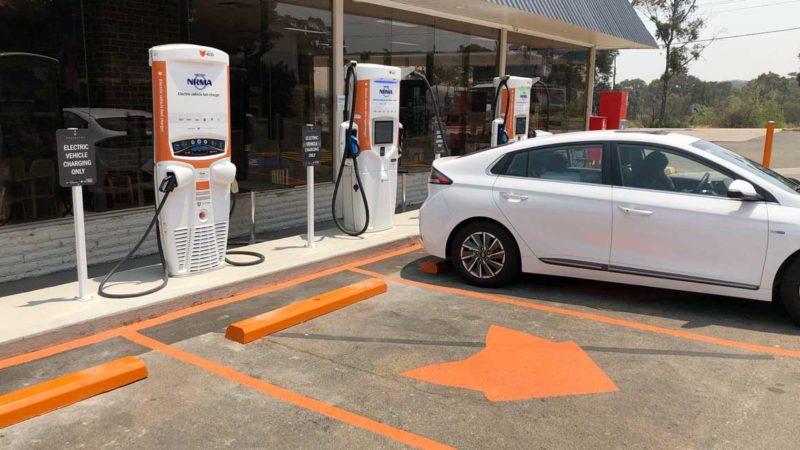It’s not just drivers of petrol and diesel cars (also known as mechanical fart boxes) that are feeling the pinch at the bowser. Drivers of electric cars that like to charge at ultra-rapid charging stations face a steep, 50 per cent jump in prices from next month.
Chargefox, which operates the country’s biggest ultra-rapid network – defined as charging stations that can operate up to 350kW – says its pricing rate of 40c/kWh set in 2018 is about to jump to 60c/kWh from May 9.
The company says that prices for its fast chargers (up to 50kW) will not change – most of them are priced at 20c/kWh – and it will continue to offer discounts of up to 100% for drivers of partner EV models.
Members of motoring club such as NRMA, RACV, RACQ, RAA, RAC and RACT, will continue to receive at least a 20% discount at all ultra-rapid stations.
The price jump puts it at the same level as rival ultra fast charging network Evie, although above the 52c/kWh charged by the Tesla supercharger network, which can operate at up to 250kW, depending on the vehicle.
Chargefox also says it is looking to boost the reliability of its charging stations, following criticism about the number of charging stations out of action, or limited by local network constraints.
See: Why are so many EV charging stations out of order? Are they reliable?
“There have been outages at some sites, less than ideal visibility of maintenance timeframes and questions about the reliability of the sites on our network – both for the locations we own and those we manage for others,” it said in an emailed statement.
“We recognise these issues and the impact they’ve had, and we want all drivers to know that we’re fixing them.”
It says these measures include “new approaches” to working with manufacturers on the supply of parts for station hardware, improving turnaround times on maintenance at offline stations, and increased transparency with drivers and site hosts about station outages and planned restoration.

Giles Parkinson is founder and editor of The Driven, and also edits and founded the Renew Economy and One Step Off The Grid web sites. He has been a journalist for nearly 40 years, is a former business and deputy editor of the Australian Financial Review, and owns a Tesla Model 3.


